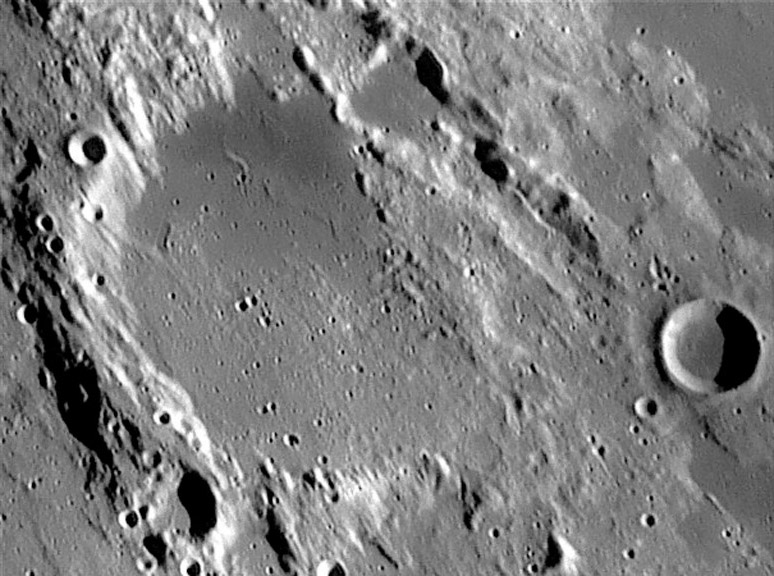
Image by Bruno Daversin
I learned from Rükl’s Atlas of the Moon that Sosigenes (28 km wide crater to the right) was an advisor of Julius Caesar, (90 km) at center left. Riccioli, who named them both in 1651, certainly knew his Roman history. What I know is that there are two intriguing stories here. The larger crater has been strongly modified by the Imbrium basin impact. The entire area has a windswept look, due to a horizontal hurricane of debris that surged from upper left towards bottom right. The relatively smooth, but cratered, material that fills most of the floor of Julius Caesar is also from Imbrium, as is the coalescing line of roughly crateriform structures (crude secondary craters) that cut JC’s upper right rim. The small amount of mare basalt must have leaked up some faults and the small number of crater pits shows the dark mare material is younger than the basin debris. Sosigenes is a very unusual crater. It is relatively fresh with a sharp rim, but no terraces nor central peaks. Its depth of 1700 meters is a kilometer shallower than the same size more typical craters Menelaus and Mädler. I don’t think that Sosigenes is a standard crater with terraces and peaks buried by whatever fills their floors. In 1978 Leif Anderson and I published an analysis of 2598 fresh lunar craters, showing that the Sosigenes morphology occurred over a diameter range of 2 to 35 km, with the majority about 20-25 km wide. We proposed that Sosigenes type craters are either modified primary impacts or basin secondaries. The latter explanation seems the best interpretation, but we still don’t know for sure.
Technical Details:
5 April 2006. Ludiver Observatory 600 mm (24″) Schmidt-Cassegrain + webcam + IR filter.
Related Links:
Rükl plates 34 & 35
Wood and Anderson 1978 paper
Yesterday's LPOD: A Ribbon of Darkness
Tomorrow's LPOD: Cut by a Fault
COMMENTS?
Register, Log in, and join in the comments.



